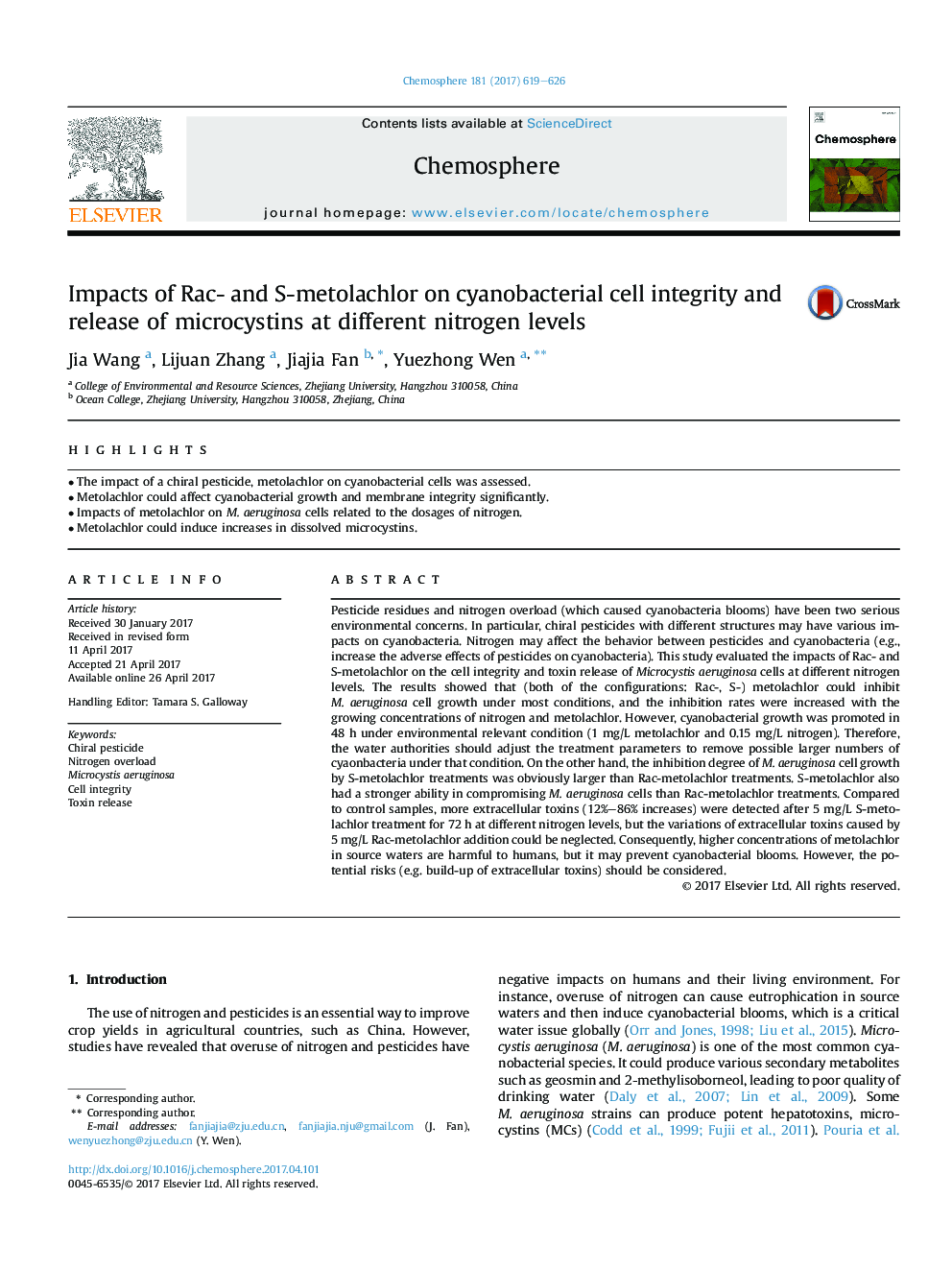| Article ID | Journal | Published Year | Pages | File Type |
|---|---|---|---|---|
| 5747179 | Chemosphere | 2017 | 8 Pages |
Abstract
Pesticide residues and nitrogen overload (which caused cyanobacteria blooms) have been two serious environmental concerns. In particular, chiral pesticides with different structures may have various impacts on cyanobacteria. Nitrogen may affect the behavior between pesticides and cyanobacteria (e.g., increase the adverse effects of pesticides on cyanobacteria). This study evaluated the impacts of Rac- and S-metolachlor on the cell integrity and toxin release of Microcystis aeruginosa cells at different nitrogen levels. The results showed that (both of the configurations: Rac-, S-) metolachlor could inhibit M. aeruginosa cell growth under most conditions, and the inhibition rates were increased with the growing concentrations of nitrogen and metolachlor. However, cyanobacterial growth was promoted in 48 h under environmental relevant condition (1 mg/L metolachlor and 0.15 mg/L nitrogen). Therefore, the water authorities should adjust the treatment parameters to remove possible larger numbers of cyaonbacteria under that condition. On the other hand, the inhibition degree of M. aeruginosa cell growth by S-metolachlor treatments was obviously larger than Rac-metolachlor treatments. S-metolachlor also had a stronger ability in compromising M. aeruginosa cells than Rac-metolachlor treatments. Compared to control samples, more extracellular toxins (12%-86% increases) were detected after 5 mg/L S-metolachlor treatment for 72 h at different nitrogen levels, but the variations of extracellular toxins caused by 5 mg/L Rac-metolachlor addition could be neglected. Consequently, higher concentrations of metolachlor in source waters are harmful to humans, but it may prevent cyanobacterial blooms. However, the potential risks (e.g. build-up of extracellular toxins) should be considered.
Related Topics
Life Sciences
Environmental Science
Environmental Chemistry
Authors
Jia Wang, Lijuan Zhang, Jiajia Fan, Yuezhong Wen,
